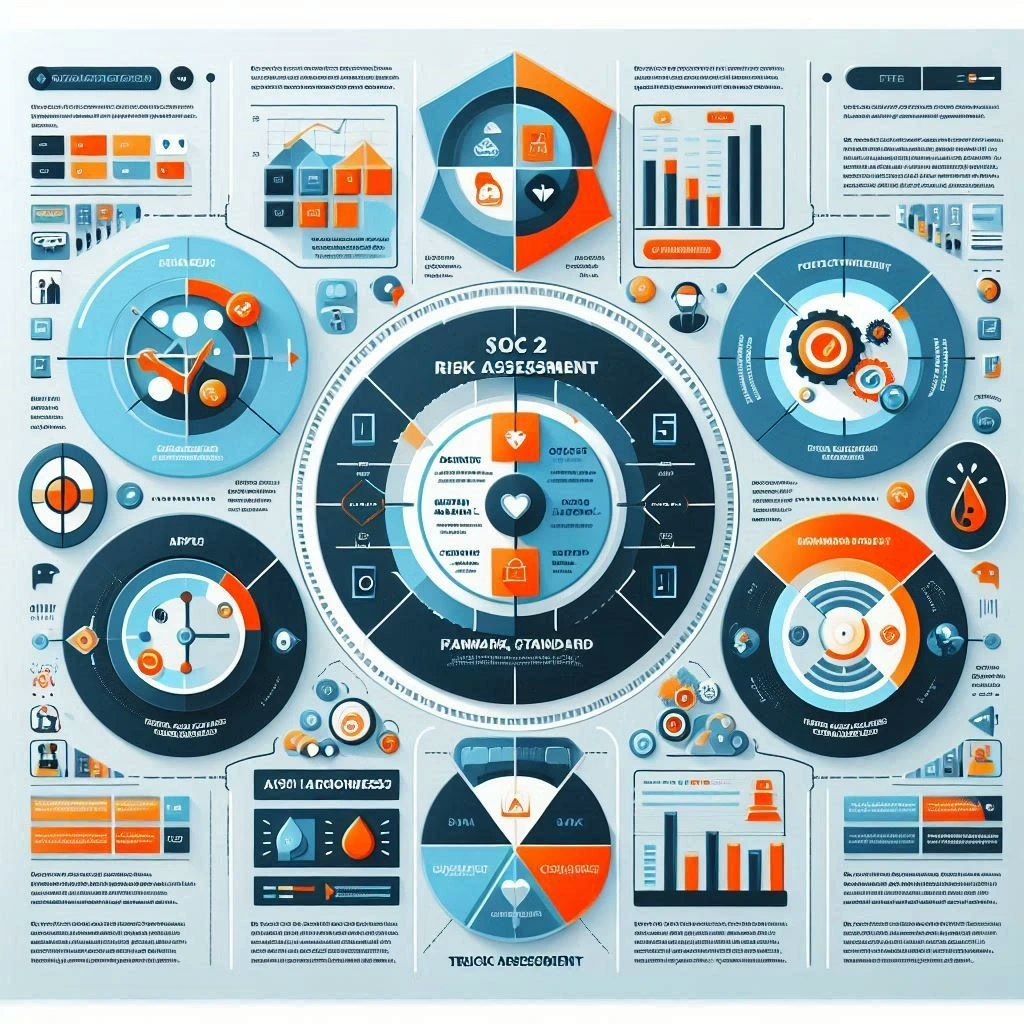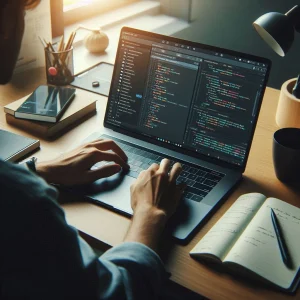Introduction to Remote Internal Audits
In the wake of the COVID-19 pandemic, the landscape of internal auditing has undergone a significant transformation, leading to the emergence of remote internal audits as a vital practice. This section aims to define remote internal audits, discuss their importance in the current environment, and explore the evolving nature of internal auditing.
Definition of Remote Internal Audits
Remote internal audits refer to the process of conducting audits without the need for physical presence at the audited location. Utilizing digital tools and technologies, auditors can perform their tasks from various locations, ensuring that they can access necessary data and communicate effectively with stakeholders. This approach allows for flexibility and efficiency, enabling audit teams to adapt to the demands of a hybrid work environment [1][2].
Importance of Remote Auditing in a Post-Pandemic World
The shift to remote auditing has become increasingly important in a post-pandemic world for several reasons:
- Continuity of Operations: Organizations have recognized the need to maintain audit functions despite physical restrictions. Remote audits ensure that compliance and risk management processes continue uninterrupted [1].
- Enhanced Efficiency: Leveraging technology allows for quicker data access and analysis, leading to more efficient audit processes. This is particularly crucial as organizations strive to adapt to new operational realities [2][5].
- Cost-Effectiveness: Remote audits can reduce travel expenses and time, making them a more economical option for many organizations [3].
The Evolving Landscape of Internal Auditing
The internal audit profession is evolving rapidly, driven by advancements in technology and changing organizational needs. Key trends include:
- Integration of Technology: The adoption of collaborative tools and cloud-based solutions has revolutionized how audit teams operate. These technologies facilitate real-time data analysis and enhance communication among team members, regardless of their physical locations [6][7].
- Continuous Auditing and Monitoring: Internal audits are transitioning towards a model of continuous auditing, where real-time data is analyzed to provide ongoing insights into organizational performance and compliance. This shift allows for more proactive risk management [5].
- Focus on Digitization: As organizations increasingly embrace digital transformation, internal auditors must adapt by enhancing their technological skills and leveraging digital tools to improve audit quality and effectiveness [9][10].
Remote internal audits are not just a temporary solution but a fundamental shift in how auditing is conducted. By embracing technology and adapting to the evolving landscape, internal audit teams can enhance their effectiveness and ensure that they meet the challenges of today’s dynamic business environment.
Benefits of Remote Internal Auditing
Remote internal auditing has gained significant traction, particularly in the wake of technological advancements and the necessity for flexible work arrangements. Here are some key benefits that highlight the advantages of adopting remote auditing practices:
- Cost-Efficiency and Reduced Travel Expenses: One of the most immediate benefits of remote internal auditing is the elimination of travel costs. Auditors can conduct assessments without the need to physically visit audit sites, which not only saves money but also allows for a more efficient allocation of resources. This cost-saving aspect is particularly beneficial for organizations looking to optimize their audit budgets while maintaining high standards of oversight [4][7].
- Increased Flexibility and Accessibility for Audit Teams: Remote auditing provides audit teams with the flexibility to work from various locations, which can lead to improved work-life balance and job satisfaction. This flexibility allows auditors to manage their time more effectively, enabling them to focus on critical tasks without the constraints of travel schedules. Additionally, cloud-based tools facilitate access to necessary documents and systems from anywhere, enhancing the overall accessibility of audit processes [8][10].
- Enhanced Collaboration and Communication Among Team Members: The use of digital communication platforms, such as Zoom and Microsoft Teams, fosters better collaboration among audit team members. These tools enable real-time discussions, sharing of insights, and quick resolution of queries, which are essential for maintaining the flow of information during audits. Clear and consistent communication is crucial, especially in remote settings, to ensure that all team members are aligned and informed throughout the audit process [11][14].
- Ability to Access Real-Time Data and Analytics: Remote auditing leverages advanced technologies that allow auditors to access real-time data and analytics. This capability enhances the effectiveness of audits by enabling auditors to perform thorough analyses and detect anomalies more efficiently. The integration of cloud audit tools streamlines the process of data collection and analysis, providing auditors with deeper insights into organizational processes and controls [3][6][10].
The shift towards remote internal auditing not only aligns with modern work practices but also offers substantial benefits that can enhance the efficiency and effectiveness of audit functions. By leveraging technology, internal audit teams can navigate the complexities of today’s business environment while ensuring robust oversight and compliance.
Technological Tools for Remote Internal Audits
In the evolving landscape of internal auditing, the shift towards remote audits has been significantly facilitated by various technological tools. These tools not only enhance efficiency but also ensure that audit teams can maintain high standards of accuracy and security. Below are some key technologies that are essential for effective remote internal audits:
Audit Management Software:
- Features: Audit management software typically includes functionalities such as planning, scheduling, and tracking audits, as well as reporting capabilities. These tools often provide dashboards for real-time monitoring of audit progress and findings.
- Benefits: By centralizing audit processes, these platforms enhance transparency and facilitate better project management. They allow teams to collaborate seamlessly, even when working remotely, ensuring that all members are aligned and informed throughout the audit process [1][7].
Collaboration Tools:
- Tools like Microsoft Teams and Slack have become indispensable for remote communication among audit teams.
- Functionality: These platforms support video conferencing, instant messaging, and file sharing, which are crucial for maintaining effective communication during audits. They enable auditors to conduct meetings, share updates, and discuss findings in real-time, regardless of their physical locations [2][9].
Data Analytics Tools:
- The use of data analytics tools allows internal auditors to gain real-time insights into financial and operational data.
- Advantages: These tools can identify trends, anomalies, and risks that may not be immediately apparent through traditional auditing methods. By leveraging data analytics, auditors can enhance their decision-making processes and focus on areas that require more in-depth examination [5][6].
Document Management Systems:
- Secure document management systems are vital for storing and managing audit-related documents.
- Security Features: These systems ensure that sensitive data is protected through encryption and access controls, which is particularly important in a remote audit environment. They facilitate easy retrieval and sharing of documents, ensuring that all team members have access to the necessary information while maintaining compliance with data protection regulations [4][8].
The integration of these technological tools into the internal audit process not only streamlines operations but also enhances the overall effectiveness of remote audits. By embracing these innovations, internal audit teams can ensure that they remain agile and responsive in a rapidly changing environment.
Ensuring Data Security and Compliance
In the evolving landscape of internal auditing, the shift towards remote audits has introduced both opportunities and challenges, particularly in the realm of data security and compliance. As organizations increasingly rely on technology to facilitate remote auditing, it is crucial to implement robust cybersecurity measures to protect sensitive information and ensure adherence to regulatory requirements.
Importance of Cybersecurity Measures for Remote Audits
With a significant portion of employees working remotely, organizations must prioritize cybersecurity to safeguard their internal networks and sensitive data. Remote audits often involve accessing confidential information, making it essential to establish a comprehensive cybersecurity framework that addresses potential vulnerabilities. This includes:
- Implementing strong authentication protocols: Multi-factor authentication (MFA) can significantly reduce the risk of unauthorized access to sensitive data.
- Regularly updating software and systems: Keeping all auditing tools and systems up to date helps protect against known vulnerabilities and exploits.
- Conducting risk assessments: Regular evaluations of the cybersecurity landscape can help identify and mitigate potential threats before they impact the audit process [1][10].
Best Practices for Secure Data Sharing and Storage
To facilitate secure data sharing and storage during remote audits, organizations should adopt best practices that enhance data protection. These practices include:
- Utilizing encryption: Encrypting sensitive data both in transit and at rest ensures that even if data is intercepted, it remains unreadable to unauthorized users [2][10].
- Establishing clear data access controls: Limiting access to sensitive information based on roles and responsibilities helps minimize the risk of data breaches.
- Employing secure collaboration tools: Utilizing platforms designed for secure file sharing and communication can enhance the safety of data exchanges during remote audits [9][10].
Regulatory Compliance Considerations in Remote Auditing
Compliance with legal and regulatory standards is paramount in the context of remote audits. Organizations must ensure that their auditing practices align with relevant regulations, such as the General Data Protection Regulation (GDPR) and other industry-specific guidelines. Key considerations include:
- Understanding specific compliance requirements: Each organization should be aware of the data protection laws applicable to their operations and ensure that remote auditing practices meet these standards [3][12].
- Maintaining thorough documentation: Keeping detailed records of audit processes, data access, and security measures can demonstrate compliance and facilitate audits by regulatory bodies [6][10].
- Regular training and awareness programs: Educating internal audit teams and IT professionals about compliance requirements and cybersecurity best practices is essential for fostering a culture of security within the organization [2][11].
By leveraging technology effectively while prioritizing data security and compliance, internal audit teams can navigate the complexities of remote auditing with confidence. Implementing these strategies not only protects sensitive information but also enhances the overall integrity and reliability of the auditing process.
Best Practices for Conducting Remote Internal Audits
In the evolving landscape of internal auditing, leveraging technology is essential for conducting effective remote audits. Here are some actionable strategies that internal audit teams and IT professionals can implement to enhance their remote auditing processes:
- Establishing Clear Communication Protocols: Effective communication is crucial in remote audits. Audit teams should develop clear and consistent communication protocols to ensure that all parties are aligned. This includes defining how information will be shared, the frequency of updates, and the channels to be used for communication. Regular interaction helps maintain transparency and fosters collaboration between auditors and auditees [11].
- Utilizing Checklists and Templates: To streamline the auditing process, it is beneficial to create and use standardized checklists and templates. These tools can help ensure that all necessary steps are followed and that no critical areas are overlooked. By having a structured approach, audit teams can enhance efficiency and focus on high-risk areas that require more attention [5][6].
- Setting Up Regular Check-Ins and Updates with Stakeholders: Regular check-ins with stakeholders are vital for keeping everyone informed and engaged throughout the audit process. Scheduling periodic updates allows audit teams to address any concerns, clarify expectations, and adjust plans as necessary. This practice not only enhances accountability but also helps in managing any emerging risks effectively [10][12].
- Leveraging Video Conferencing for Interviews and Presentations: Video conferencing tools such as Zoom, Skype, and Microsoft Teams are invaluable for conducting interviews and presentations during remote audits. These platforms facilitate real-time interactions, allowing auditors to engage with auditees effectively. Utilizing video conferencing can help replicate the face-to-face experience, making discussions more dynamic and interactive [9][10].
By implementing these best practices, internal audit teams can navigate the challenges of remote auditing while ensuring that their processes remain effective and efficient. Embracing technology not only enhances the audit experience but also contributes to a more resilient and adaptable auditing framework in today’s digital age.
Challenges and Solutions in Remote Internal Auditing
As organizations increasingly adopt remote auditing practices, internal audit teams face unique challenges that require innovative solutions. Leveraging technology effectively can help overcome these obstacles, ensuring that audits remain thorough and efficient. Here are some common challenges and proposed solutions for remote internal auditing:
1. Addressing Potential Technology Issues and Connectivity Problems
- Challenge: Remote audits heavily rely on technology, which can lead to issues such as software malfunctions, inadequate bandwidth, or connectivity problems. These issues can disrupt the audit process and hinder communication between team members and clients.
- Solution: To mitigate these risks, organizations should invest in robust technology infrastructure, including reliable cloud-based auditing tools that facilitate real-time collaboration. Regular training sessions can also help team members become proficient in using these tools, reducing the likelihood of technical difficulties during audits. Additionally, having a backup plan, such as alternative communication methods, can ensure continuity in case of connectivity issues [6][10].
2. Managing Team Dynamics and Maintaining Engagement
- Challenge: Remote work can lead to feelings of isolation among team members, making it difficult to maintain engagement and collaboration. The lack of face-to-face interaction may also impact team dynamics and morale.
- Solution: To foster a collaborative environment, audit teams should implement regular virtual meetings and check-ins to discuss progress and address any concerns. Utilizing video conferencing tools can enhance communication and help maintain personal connections among team members. Encouraging team-building activities, even in a virtual format, can also strengthen relationships and improve overall engagement [12].
3. Ensuring Thoroughness Without In-Person Oversight
- Challenge: Conducting audits remotely can make it challenging to ensure thoroughness and accuracy without the ability to perform in-person inspections or observations. This can lead to gaps in the audit process and potential oversights.
- Solution: To ensure comprehensive audits, teams should adopt advanced auditing technologies that allow for electronic evidence collection and analysis. Tools that facilitate data analytics can help auditors identify trends and anomalies without needing physical access to documents. Additionally, establishing clear protocols for documentation and communication can help maintain the rigor of the audit process, ensuring that all necessary information is captured and reviewed [1][14].
By addressing these challenges with effective technological solutions and proactive management strategies, internal audit teams can successfully navigate the complexities of remote auditing. This approach not only enhances the efficiency of the audit process but also ensures that audits remain thorough and reliable, even in a virtual environment.
Future Trends in Remote Internal Auditing
As organizations continue to adapt to the evolving landscape of work, remote internal auditing has emerged as a critical component of effective governance and risk management. The integration of advanced technologies is reshaping how audits are conducted, enhancing efficiency and accuracy. Here are some key trends and technological advancements that are shaping the future of remote internal auditing:
- Emerging Technologies: The adoption of artificial intelligence (AI), machine learning (ML), and blockchain is revolutionizing the auditing process. These technologies enable auditors to analyze vast amounts of data quickly and accurately, identifying anomalies and trends that may not be visible through traditional methods. For instance, AI can automate routine tasks, allowing auditors to focus on more complex analyses and strategic decision-making, while ML algorithms can continuously learn from data patterns to improve audit outcomes [2][10].
- Shifts in Audit Methodologies: The methodologies employed in internal audits are evolving due to technological advancements. The integration of data analytics and cloud-based solutions is becoming increasingly prevalent, allowing auditors to conduct real-time monitoring and analysis. This shift not only enhances the quality of audits but also enables auditors to respond more swiftly to emerging risks and opportunities. The emphasis on data-driven decision-making is transforming the audit landscape, making it more proactive and responsive [11].
- Role of Remote Audits in a Hybrid Work Environment: The rise of hybrid work models has necessitated a reevaluation of audit practices. Remote audits are now essential for maintaining oversight and compliance in organizations where employees may be working from various locations. This flexibility allows internal audit teams to conduct audits without the constraints of physical presence, ensuring continuity and efficiency. Furthermore, remote auditing facilitates collaboration among team members and stakeholders, leveraging digital tools to enhance communication and information sharing [6][12].
The future of remote internal auditing is poised to be dynamic and transformative, driven by technological advancements and the need for adaptability in a hybrid work environment. By embracing these trends and leveraging innovative tools, internal audit teams can enhance their effectiveness and deliver greater value to their organizations. As the landscape continues to evolve, staying ahead of these trends will be crucial for internal auditors and IT professionals alike [13][15].
Conclusion
In the evolving landscape of internal auditing, the shift towards remote audits has been significantly facilitated by advancements in technology. As organizations adapt to new working environments, leveraging technological tools has become essential for maintaining the integrity and effectiveness of the audit process. Here are the key takeaways regarding the benefits and tools for remote audits:
- Enhanced Efficiency and Effectiveness: Technology plays a crucial role in streamlining audit processes. Tools such as data analytics and continuous monitoring systems not only improve accuracy but also provide deeper insights into company records and workflows, allowing auditors to identify risks more effectively.
- Improved Communication and Collaboration: Cloud-based systems and collaborative tools like Slack or Microsoft Teams enhance communication among audit teams, ensuring that all members remain connected and informed, regardless of their physical location. This fosters a collaborative environment that is vital for successful audits [8][14].
- Risk Mitigation: Remote auditing can reduce risks associated with travel and in-person meetings, promoting safety while still ensuring thorough examination of company records and processes. This adaptability is particularly important in today’s dynamic work environment [2][10].
As internal audit teams and IT professionals consider the future of their auditing practices, it is imperative to embrace technology. The integration of suitable tools not only enhances auditing efficiency but also positions organizations to respond swiftly to emerging challenges.
We encourage audit teams to evaluate their current processes and identify technological solutions that can be implemented to improve their remote auditing capabilities. By adopting these tools, organizations can ensure that their internal audit functions remain robust, transparent, and effective in a remote setting. Embracing technology is not just a trend; it is a necessary step towards achieving excellence in internal auditing.
Find out more about Shaun Stoltz https://www.shaunstoltz.com/about/
This post was written by an AI and reviewed/edited by a human.



